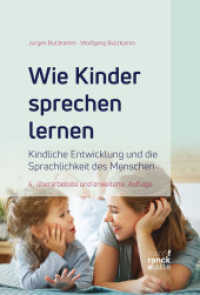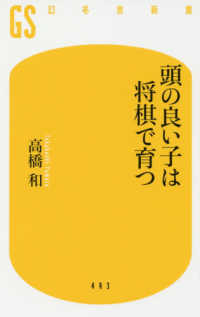Full Description
This ground-breaking book is the result of the shared fascination of an artist and a scientist with the perfect design of pollen grains, organisms so small that they cannot be seen without a microscope. The grains are enclosed beyond the accessible beauty of the flower until the moment of release, when they are carried by wind, water or animal vectors to achieve their purpose, which is procreation.
Pollen is ubiquitous; in childhood we all learn a little about plant reproduction and the role of the bee but few of us are aware of the astonishing diversity of the structure of pollen grains, although these tiny, extraordinary forms have fascinated the scientifically curious since the seventeenth century.
Starting with a clear explanation of the structure and form of pollen, the authors go on to examine the remarkable events from pollination to fertilisation, and the many ways in which pollen impacts unseen on our lives. All of this is interwoven with a dazzling array of original images by the authors, created especially for the book. In this new edition many more original illustrations have been added and the text has been fully updated.
Pollen is a unique interpretation of a magical world that no other book on the subject has ever been able to achieve.
Contents
Explanatory Notes
Foreword by Professor Sir Peter Crane
The Art & Science of Pollen
No Pollen - No Flowers; No Flowers - No Pollen
Flower Structure
Where is the pollen?
Stamens and Pistils
The Development & Function of Pollen
The difference between pollen and spores
Pollen Structure
The pollen wall
Pollen apertures
Why does pollen have so many variations?
Pollen size
Pollenkitt
Pollen: natural colours
Artificial pollen colour
Comparative Pollen Studies
Pollen Morphology in Plant Systematics & Evolution
Pollen Preparation for Comparative Pollen Morphology
Sexual Plant Reproduction
What are flowering plants?
Asexual Reproduction
How to Avoid Self-Fertilisation
Self-incompatibility
Heterostyly
Heteromorphy
Dichogamy
Insects
The honey bee
Are honey bees the only insects that make honey for food?
Animals
Wind and water
Co-adaptation
Pollen as a Pollinator Attractant
The Sex Act - A Seed is Born
Picturing the Invisible
Pixillated Pollen
Hortus in Transit
Postscript
Appendices
Glossary
Bibliography
Index of plants illustrated
Acknowledgments








